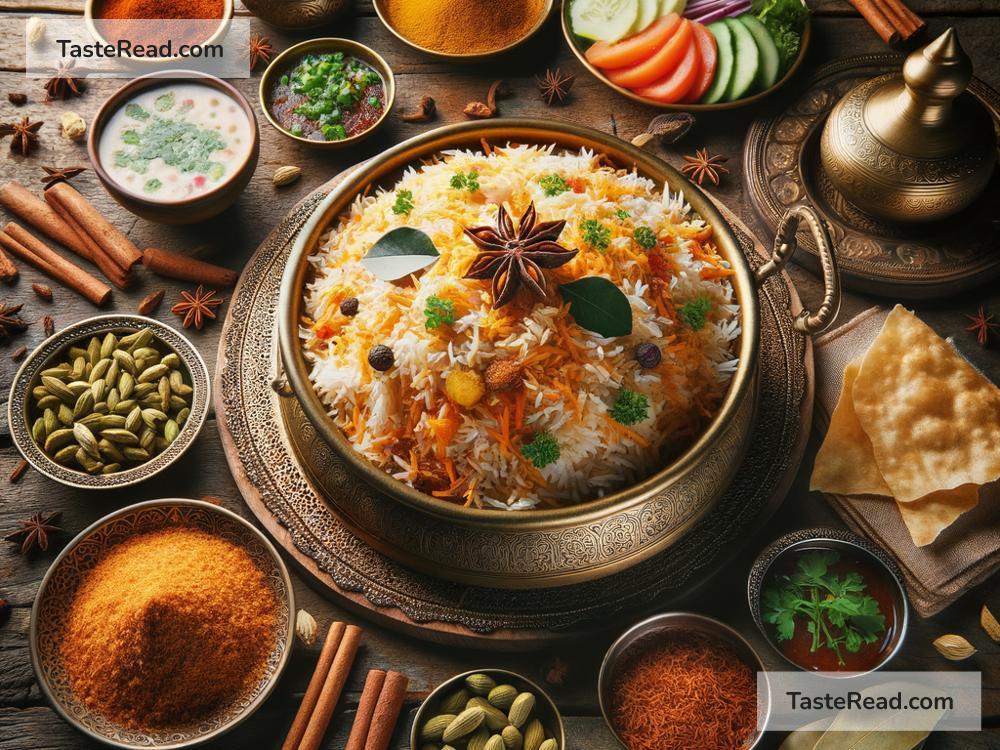The Development of Indian Biryani
Biryani is one of the most loved dishes in India, and it brings a smile to the faces of food lovers across the world. The aroma of spices, the tender meat, and the fragrant basmati rice combine to make biryani a dish that is hard to resist. But have you ever wondered how this delicious dish became such an important part of Indian cuisine? Let us take a journey through time to explore the development of Indian biryani.
The Origins of Biryani
The word “biryani” comes from the Persian language. Many historians believe that the dish originally came from Persia (modern-day Iran) and was introduced to India during the Mughal period. Persian travelers, merchants, and rulers brought their culinary traditions with them, and over time, these were adapted to suit Indian tastes.
It is believed that biryani began as a simple dish of rice cooked with meat and a few spices. In Persia, similar rice dishes were known as “pilaf” or “pulao.” When this dish arrived in India, it blended beautifully with the spices, flavors, and techniques of Indian cooking, giving rise to the biryani we know today.
The Role of the Mughals
The Mughals ruled India for several centuries, and they were famous for their love of food. Mughal emperors like Akbar and Shah Jahan promoted rich and flavorful dishes in their royal kitchens. Biryani was one of the dishes that gained popularity during this time.
The Mughal biryani became more elaborate and luxurious under their rule. Chefs added ingredients like saffron, yogurt, and nuts to enhance the flavors and make the dish grander. The royal kitchens also used cooking methods like “dum,” where the food is cooked on a slow flame in a sealed pot. This technique helped in blending the flavors perfectly.
Regional Varieties of Biryani
As biryani spread across India, each region added its own touch to the dish. Today, Indian biryani has many variations, each with a unique flavor and style.
-
Hyderabadi Biryani
Hyderabad, a city in southern India, is famous for its biryani. The Nizams of Hyderabad were great patrons of food, and their chefs created some of the most flavorful biryanis. Hyderabadi biryani is known for its use of basmati rice, tender meat, and a blend of aromatic spices. Some versions, like the “kacchi biryani,” involve marinating the raw meat with spices and cooking it with rice simultaneously. -
Lucknowi Biryani
Lucknowi biryani comes from northern India and has connections to the Awadhi style of cooking. It is milder compared to other biryanis and focuses on delicate flavors and fragrant rice. Lucknowi biryani is often cooked using the “dum” method and is enjoyed with a side of yogurt or raita. -
Kolkata Biryani
The Kolkata biryani has an interesting story. When Nawab Wajid Ali Shah of Awadh moved to Kolkata in the 19th century, he brought his royal chefs with him. However, due to financial challenges, the chefs added potatoes to the biryani as a way to stretch the dish and make it more affordable. Today, Kolkata biryani is famous for its inclusion of potatoes along with rice and meat. -
Malabar Biryani
The Malabar region in Kerala is home to Malabar biryani, which is distinctly different from other varieties. This coastal version uses short-grained rice instead of basmati rice and incorporates flavors like coconut milk, curry leaves, and local spices. -
Dindigul Biryani
Dindigul biryani, from Tamil Nadu, is known for its tangy taste, which comes from the use of lemon juice and curd. It often uses jeera samba rice, a short-grain rice variety with a unique aroma.
The Evolution through Time
Today, biryani is not just a dish—it’s an emotion and a celebration. While the traditional versions still hold their charm, biryani has also evolved to suit modern tastes. Vegetarian versions of biryani, where vegetables replace meat, are widely enjoyed. Some creative chefs even make biryani with paneer or tofu for a twist.
Street vendors, home cooks, and restaurants have also made biryani more accessible than ever. Technology and online delivery platforms have allowed food lovers to enjoy their favorite biryani from the comfort of their homes.
Why Is Biryani So Popular?
There are many reasons why biryani is loved by so many people. First, it is a complete meal—rice, protein, and spices all come together in one dish. Second, biryani appeals to a wide range of tastes, whether you like spicy food or mild flavors. Third, it has a rich history and cultural significance, making it more than just food—it’s a connection to tradition.
Conclusion
The development of Indian biryani is a story of tradition, innovation, and love for food. From its Persian beginnings to its transformation across Indian regions, this dish has truly traveled far. Whether you enjoy Hyderabadi biryani, Lucknowi biryani, or a modern vegetarian variation, biryani continues to bring people closer with its warmth and delicious flavors.
Next time you dig into a plate of biryani, remember the journey it has taken to become one of India’s most iconic dishes!


